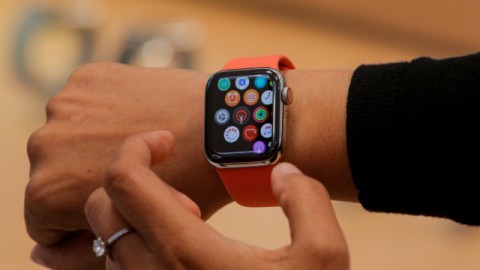
Currently patients must undergo hospital tests to determine if they are at risk, but researchers believe new technology could make detection far easier.
Smart watches could soon be saving lives by warning their wearers they are at risk of sudden cardiac death.
Researchers at UCL and Queen Mary, University of London have developed an algorithm to detect changes in heart rhythm through wearable devices.
Thousands of Brits suffer sudden cardiac deaths each year – when their hearts develop a chaotic rhythm preventing it from properly pumping blood around the body. Currently patients must undergo hospital tests to determine if they are at risk, but researchers believe new technology could make detection far easier.
Using data from 24,000 participants from the UK Biobank Imaging study, researchers determined the standard “T wave” – which represents the time it takes the heart ventricles to relax once they have pumped blood out of the heart – among adults. They then gathered evidence which showed that people with the biggest changes in their T waves over time were significantly more likely to be hospitalized or die from irregular heart rhythms.
Professor Metin Avkiran, of the British Heart Foundation, said: “Identifying people who are at risk of sudden cardiac death is a major challenge. This algorithm could act as a warning sign that someone is at risk of a life-threatening disturbance in their heart rhythm.
“While more work is needed to test the algorithm, this research is a step forward in our ability to identify people who could be at risk of severe arrhythmias and sudden death and take preventive action.”
The study, titled Abnormal resting ECG T-wave morphology predicts ventricular arrhythmic risk in a large “low-risk” cohort, will be published in Heart Journal.
SOURCE: British Heart Foundation
